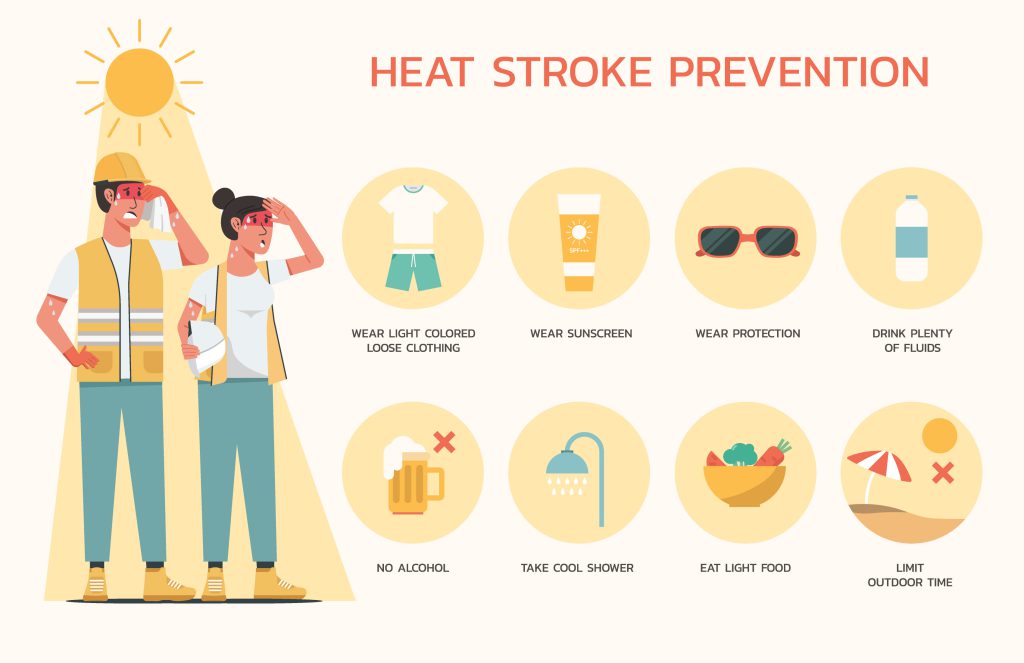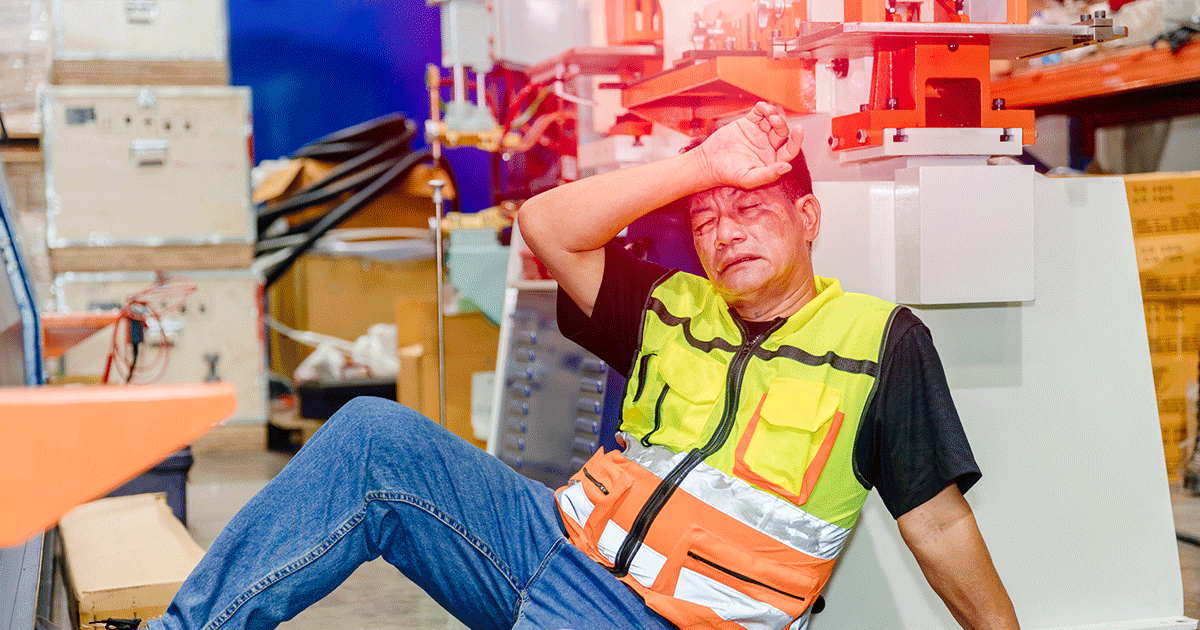As temperatures rise in the summer months, so do the risks of heat-related illnesses—especially heat stroke, the most serious and life-threatening condition caused by prolonged exposure to high temperatures. Understanding what causes heat stroke, recognizing the symptoms, and knowing when you’re most vulnerable can help keep you and your loved ones safe.
What Is Heat Stroke?
Heat stroke is a medical emergency that occurs when the body overheats and can no longer cool itself down. It typically happens when the body’s core temperature reaches 104°F (40°C) or higher due to prolonged exposure to high temperatures or physical exertion in hot weather. Unlike milder heat illnesses (like heat exhaustion or heat cramps), heat stroke requires immediate medical attention to prevent permanent damage or death [1].
What Causes Heat Stroke?
Heat stroke can occur in two main ways:
Exertional Heat Stroke – Happens during intense physical activity in hot environments, often affecting athletes, laborers, or military personnel.
Non-Exertional (Classic) Heat Stroke – Occurs in vulnerable individuals (like the elderly or those with chronic illness) during heat waves, even without exercise.
Risk factors include:
- High humidity (which impairs sweating)
- Dehydration
- Wearing heavy or dark clothing
- Alcohol consumption
- Certain medications (e.g., diuretics, antihistamines,
beta-blockers) - Age extremes (infants and seniors are more vulnerable)
Symptoms of Heat Stroke
The hallmark sign of heat stroke is a core body temperature over 104°F, but other warning signs may include:
Hot, dry skin (or sweating may still occur in exertional cases)
- Confusion, agitation, or slurred speech
- Throbbing headache
- Rapid, strong pulse
- Dizziness or fainting
- Nausea or vomiting
- Seizures
- Loss of consciousness
These symptoms can escalate quickly. If heat stroke is suspected, call 911 immediately and begin cooling the person down [2].

When Are You Most at Risk?
You’re most at risk of heat stroke during:
• Heatwaves or prolonged periods of high temperature
• Midday and early afternoon hours (10 a.m. – 4 p.m.)
• Outdoor events or physical labor without breaks or hydration
• Poorly ventilated spaces without air conditioning
• Sports practices or games in the heat
Children, seniors, and those with pre-existing health conditions are especially susceptible.
What to Do if You Suspect Heat Stroke?
Immediate action can save a life:
• Move the person to a cooler environment—preferably into air conditioning or shade.
• Remove excess clothing.
• Apply cool water to the skin and use fans or cold packs on the neck, armpits, and groin.
• Offer cold fluids only if the person is conscious and alert.
Do not give any medications (like aspirin or acetaminophen), as they do not help with heat stroke and could make things worse [3].
Prevention Tips:
• Hydrate regularly, even if you don’t feel thirsty.
• Avoid strenuous activity during peak heat hours.
• Wear light-colored, loose-fitting clothing.
• Use fans, cooling towels, or take cool showers when indoors.
• Never leave children or pets in parked cars—temperatures inside can rise dangerously fast.
• Check on elderly neighbors or those living alone during extreme heat.
Heat stroke can strike quickly and without much warning. But with a little awareness and preparation, it’s also highly preventable. Pay attention to the weather, stay hydrated, take breaks, and know the signs. Don’t take the heat lightly– it could save a life.
References
1. Mayo Clinic. “Heat Stroke.” https://www.mayoclinic.org/diseases-conditions/heat-stroke/symptoms-causes
2. CDC. “Extreme Heat: Heat Stroke.” https://www.cdc.gov/disasters/extremeheat/warning.html
3. Cleveland Clinic. “Heat Stroke.” https://my.clevelandclinic.org/health/diseases/17762-heat-stroke

